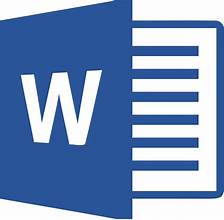Penggunaan Multimedia Interaktif untuk Meningkatkan Keterampilan Menulis Siswa Kelas VIII di MTs Biccoing Kabupaten Bone
Abstrak
Penelitian ini dilakukan di MTs Biccoing, Kabupaten Bone, yang melibatkan 14 siswa kelas VIII. Penelitian Tindakan Kelas (PTK) dilaksanakan dalam dua siklus dengan menggunakan metode kualitatif dan kuantitatif. Data dikumpulkan melalui lembar observasi dan tes menulis. Pada Siklus I, keterlibatan siswa, respons, dan keterampilan menulis menunjukkan hasil yang tidak konsisten dan di bawah harapan. Pada Siklus II, terdapat peningkatan yang signifikan, dengan keterlibatan siswa yang konsisten dan hasil menulis yang memenuhi standar yang ditetapkan. Temuan ini menunjukkan bahwa multimedia interaktif dapat secara efektif meningkatkan keterampilan menulis siswa
Referensi
Abidin, J. (2017). The use of multimedia in teaching writing for junior high school students. Journal of English Language Education, 5(2).
Aulia, D., Rahman, F., & Indah, N. (2024). Multimedia-assisted language learning in secondary schools: A classroom action research. International Journal of Education and Learning, 13(1).
Arono. (2014). Improving students’ listening skill through interactive multimedia in Indonesia. Journal of Language Teaching and Research, 5(1).
Asari, A., Nugroho, A., & Ramadhan, R. (2023). Digital era learning media. CV Istana Agency.
Burns, A. (2010). Doing action research in English language teaching: A guide for practitioners. Routledge.
Dağhan, G. (2017). Views of students about technology, effects of technology on daily living and their professional preferences. TOJET: The Turkish Online Journal of Educational Technology, 16(4).
Domagk, S. (2010). Do instructional characteristics moderate the interactivity effect in multimedia learning? Computers in Human Behavior, 26(1).
Elviana, E., Sari, P., & Husna, A. (2020). Students’ learning styles and multimedia in EFL classrooms. Journal of Language Education Research, 6(2).
Fredricks, J. A., Blumenfeld, P. C., & Paris, A. H. (2004). School engagement: Potential of the concept, state of the evidence. Review of Educational Research, 74(1).
Izlin, S., & Widiyati, T. (2023). Teacher and student perceptions of digital media in English learning. Indonesian Journal of Language Teaching, 11(1).
Jelimun, M., & Julia, N. (2022). Perceptions of multimedia use in EFL classrooms: A case study. Journal of Language and Literature Studies, 9(3).
Kabri, & Budiyanto. (2024). Interactive multimedia learning for basic English education. Journal of Research and Development in Education, 8(1).
Kemmis, S., & McTaggart, R. (1988). The action research planner (3rd ed.). Deakin University.
Madarcos, C. A. V., De Vera, M. G. B., & Manlavi, M. A. (2024). The effectiveness of using gadgets on students’ learning interests and academic performance. International Journal of Education and Teaching Zone, 3(1).
Mayer, R. E. (2009). Multimedia learning (2nd ed.). Cambridge University Press.
Mukherjee, S. (2018). Role of multimedia in education. Edelweiss Applied Science and Technology, 2(3).
Mustadi, A., Prabowo, H., & Nugroho, S. (2024). Learning styles and multimedia: A quasi-experimental study in Indonesian schools. Journal of Education Research, 10(1).
Mulyasa, E. (2012). Praktik penelitian tindakan kelas. Remaja Rosdakarya.
Nugraheni, N., & Priyana, J. (2017). The effect of multimedia on students’ language learning outcomes. Jurnal Pendidikan Bahasa Inggris, 6(2).
Nurarifah, L., Na’imah, N., Putri, R. A., & Hardiyanti, M. (2025). Improving English speaking through media in the digital age. Acuity: Journal of English Language Pedagogy, Literature, and Culture, 10(1).
Prensky, M. (2001). Digital natives, digital immigrants. On the Horizon, 9(5).
Saputri, S., Hidayat, F., & Rahmawati, L. (2022). Teachers’ perspectives on the use of multimedia in English classrooms. Journal of ELT Research, 7(2).
Subiyati, M. (1995). English grew globally from the oppressed language to the language of intellectual need. Horizon Education, 4(2).
Weigle, S. C. (2002). Assessing writing. Cambridge University Press.
Wulandari, D. (2024). The analysis of the teacher’s role in English learning based on the information, communication, and technology. Jurnal Ilmu Pendidikan, 5(2).
Yulianci, A. (2021). The role of multimedia in supporting different learning styles. Journal of Educational Media, 9(1).
Unduhan
Diterbitkan
Terbitan
Bagian
Lisensi

Artikel ini berlisensiCreative Commons Attribution-ShareAlike 4.0 International License.
The author is responsible for acquiring the permission(s) to reproduce any copyrighted figures, tables, data, or text that are being used in the submitted paper. Authors should note that text quotations of more than 250 words from a published or copyrighted work will require grant of permission from the original publisher to reprint. The written permission letter(s) must be submitted together with the manuscript.



